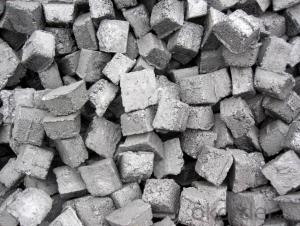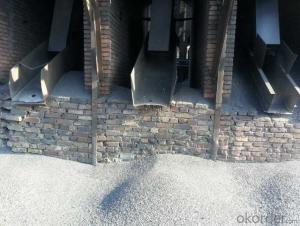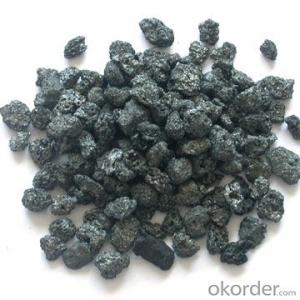Calcined Anthracite High Purity FC90-95
- Loading Port:
- Tianjin
- Payment Terms:
- TT OR LC
- Min Order Qty:
- 0 m.t.
- Supply Capability:
- 100000 m.t./month
OKorder Service Pledge
OKorder Financial Service
You Might Also Like
Packaging & Delivery
| Packaging Detail: | 25kgs/50kgs/1ton per bag or as buyer's request |
| Delivery Detail: | Within 20 days after receiving corect L/C |
Specifications
Calcined Anthracite
Fixed carbon: 90%-95%
S: 0.5% max
Size: 0-3. 3-5.3-15 or as request
Usage
Calcined Anthracite is produced using the best Anthracite-Taixi Anthracite with low S and P, It is widely used in steel making and casting.
Feature
--Low ash and sulfur contain
--Reduce needs for expensive melt additives.
--Increased dissolution rate over anthracite blends
--Reduces slagging time, labor and disposal cost
--Extends the life of the furnace lining, reduce maintenance cost and increase production yield.
PARAMETER UNIT GUARANTEE VALUE | |||||
F.C.% | 95MIN | 94MIN | 93MIN | 92MIN | 90MIN |
ASH % | 4MAX | 5MAX | 6MAX | 7MAX | 8MAX |
V.M.% | 1 MAX | 1MAX | 1.5MAX | 1.5MAX | 1.5MAX |
SULFUR % | 0.5MAX | 0.5MAX | 0.5MAX | 0.5MAX | 0.5MAX |
MOISTURE % | 0.5MAX | 0.5MAX | 0.5MAX | 0.5MAX | 0.5MAX |
Size can be adjusted based on buyer's request.
Pictures of Calcined Anthracite:

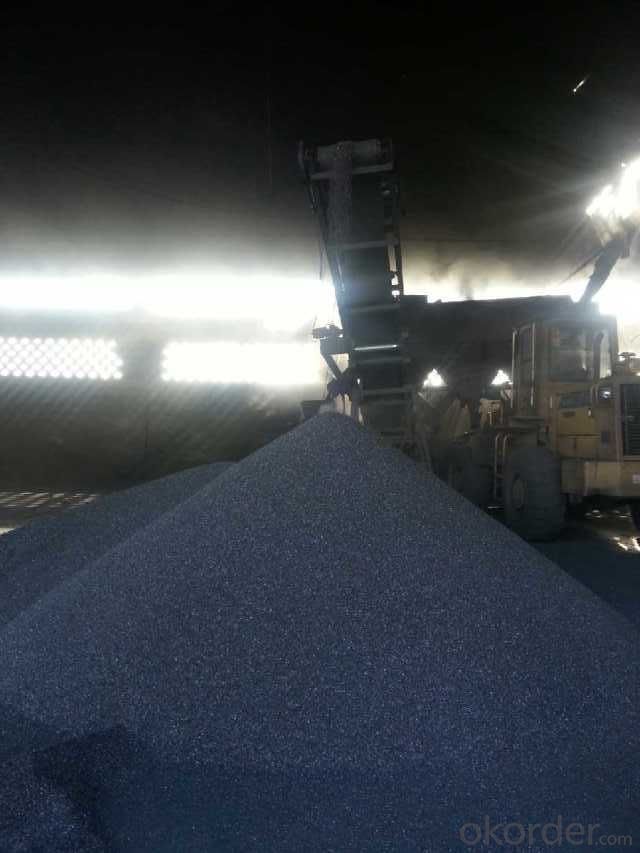
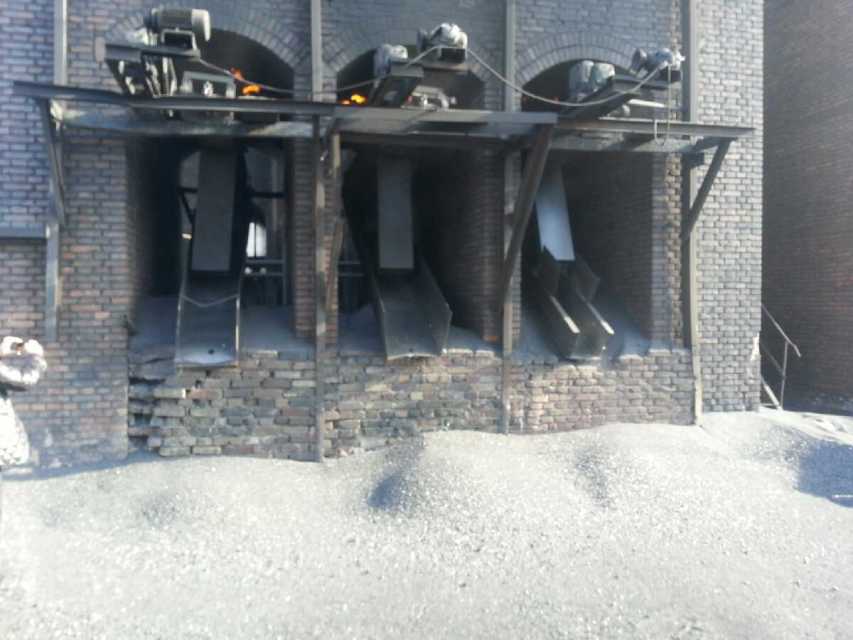
We can supply below furnace charges, please feel free to contact us if you areinterested in any of any of them:
Coke (Metallurgical, foundry, gas)
Calcined Anthracite with fixed carbon from 90% to 95%
Calcined Petroleum Coke
Graphite petroleum coke
Amorphous Graphite
- Q:Carbon Finance: Carbon Finance
- The "Framework Convention" is the world's first comprehensive control of carbon dioxide and other greenhouse gas emissions, the International Convention for the human economic and social adverse effects in response to global warming, a basic framework is also the international society for international cooperation in tackling global climate change on the issue. According to statistics, 191 countries have ratified the Convention at present. These countries are called parties to the convention. The parties to the Convention have made many pledges aimed at addressing climate change. Each party must submit periodic reports, which contain the greenhouse gas emission information of the contracting parties and indicate plans and specific measures for the implementation of the convention. The Convention came into force in March 1994 and laid the legal foundation for international cooperation in dealing with climate change. It was an authoritative, universal and comprehensive international framework. The Convention consists of a preamble and 26 main texts. The Convention is legally binding to control emissions of carbon dioxide, methane and other greenhouse gases in the atmosphere and stabilize the concentration of greenhouse gases from the destruction of the climate system. The Convention differs from the developed countries and developing countries in terms of their obligations and procedures for fulfilling their obligations.
- Q:What is carbon coffee fiber?
- Its main functions are bacteriostasis, deodorization, divergence of negative ions and anti ultraviolet rays.
- Q:What role does carbon play in photosynthesis?
- The role of carbon in photosynthesis is crucial because it serves as the primary element utilized by plants to generate organic compounds. In the process of photosynthesis, plants absorb carbon dioxide from the atmosphere and employ it to synthesize glucose, a simple sugar that acts as a foundational component for more intricate carbohydrates like starch and cellulose. This entire process takes place within the chloroplasts of plant cells, specifically in the stroma of the chloroplast. It is in this location that the enzyme RuBisCO facilitates the fixation of carbon dioxide into an organic molecule called PGA (phosphoglycerate). By means of a series of reactions referred to as the Calvin cycle, PGA is transformed into glucose, which can be either stored as energy or utilized for growth and reproduction. To sum up, carbon is indispensable to photosynthesis since it supplies the necessary raw material for plants to self-generate their own sustenance and maintain life.
- Q:What is carbon neutral certification?
- The process of carbon neutral certification involves evaluating and verifying organizations, products, or services to ensure they have a carbon footprint that equals zero. This requires taking significant measures to reduce greenhouse gas emissions and offsetting any remaining emissions through the purchase of carbon credits or investments in projects that remove carbon dioxide from the atmosphere. To achieve carbon neutrality, entities undergo a thorough assessment that measures their carbon emissions, sets reduction targets, implements initiatives to reduce their carbon footprint, and tracks progress. After reducing emissions as much as possible, any remaining emissions are offset by investing in verified projects such as reforestation, renewable energy, or energy efficiency projects that reduce greenhouse gases. Certification is conducted by an independent third-party organization to evaluate and verify carbon neutrality claims, ensuring transparency and credibility. Once certified, organizations or products can display the carbon neutral label to demonstrate their commitment to environmental sustainability and responsible carbon management. Carbon neutral certification is crucial as it offers a standardized and recognized method for organizations and products to showcase their dedication to combating climate change. It enables consumers and stakeholders to make informed choices by supporting entities that have taken concrete steps to reduce their carbon emissions and contribute to a more sustainable future. Moreover, carbon neutral certification encourages organizations to adopt sustainable practices and invest in environmentally positive projects, thus hastening the transition to a low-carbon economy.
- Q:They include a cementite, two cementite, three cementite, eutectic cementite and eutectoid cementite, and compare their temperature, composition and morphology
- Three: cementite in iron graphite in the phase diagram of F (Fe) + Fe3C two-phase region precipitation of Fe3C is three times the cementite formation temperature in the eutectoid temperature (727 DEG C), morphology is fine flake or granular.Eutectic cementite: Fe3C body in eutectic (A (Fe) + Fe3C) formed at eutectic temperature (1148 DEG C). The morphology is lamellar eutectic morphology. The carbon content is about 4.3%.Eutectoid cementite: Fe3C in eutectoid (F (Fe) +Fe3C) formed at eutectoid temperature (727 DEG C), characterized by flaky eutectoid morphology. The carbon content is about 0.77%.
- Q:What are the impacts of carbon emissions on the stability of kelp forests?
- Carbon emissions have significant impacts on the stability of kelp forests. Increased carbon dioxide (CO2) levels in the atmosphere lead to ocean acidification, which has detrimental effects on kelp. As CO2 dissolves in seawater, it forms carbonic acid, lowering the pH of the ocean. This acidification inhibits the growth and development of kelp, making them more vulnerable to stressors and reducing their overall stability. Ocean acidification affects the physiology of kelp in several ways. It hampers their ability to take up essential nutrients, such as nitrogen and phosphorus, which are crucial for their growth. This nutrient limitation weakens the kelp, making them more susceptible to diseases, predation, and damage from storms. Additionally, acidified seawater can hinder the development of kelp spores, impairing their ability to reproduce and regenerate kelp forests. Furthermore, carbon emissions contribute to rising sea temperatures, which also have detrimental effects on kelp forests. As the climate warms, kelp may experience thermal stress, leading to reduced growth rates and increased mortality. Warmer waters can also favor the growth of harmful algae species, which can outcompete kelp for space and resources, further destabilizing kelp forests. The stability of kelp forests is crucial as they provide numerous ecosystem services. They act as important carbon sinks, absorbing and storing large amounts of carbon dioxide from the atmosphere. Kelp forests also provide habitat and nursery grounds for a wide variety of marine species, including commercially important fish and invertebrates. They help maintain the health and productivity of coastal ecosystems by reducing coastal erosion, improving water quality, and supporting biodiversity. To mitigate the impacts of carbon emissions on kelp forests, it is essential to reduce our carbon footprint by transitioning to cleaner and more sustainable energy sources. Additionally, protecting and restoring coastal habitats, including kelp forests, can enhance their resilience to climate change and other stressors. Implementing sustainable fishing practices and establishing marine protected areas can also help preserve and maintain the stability of kelp forests and the valuable ecosystem services they provide.
- Q:What are the consequences of increased carbon emissions on political stability?
- Increased carbon emissions can have significant consequences on political stability. One of the main consequences is the exacerbation of environmental challenges and natural disasters. As carbon emissions contribute to global warming, the frequency and intensity of extreme weather events such as hurricanes, droughts, and flooding increase. These disasters can lead to displacement of communities, destruction of infrastructure, and loss of lives, all of which can have a destabilizing effect on societies. Moreover, the economic impact of increased carbon emissions can also create political instability. As climate change affects agriculture, water resources, and energy production, it can lead to economic disturbances, unemployment, and rising food prices. These economic hardships can fuel social unrest, protests, and even conflicts, particularly in countries that heavily rely on these sectors for their livelihoods. Additionally, the consequences of increased carbon emissions can exacerbate existing social and political tensions. Climate change often disproportionately affects vulnerable populations, such as communities in developing countries or marginalized groups. This inequality can aggravate social inequalities, increase social unrest, and lead to political instability as marginalized communities demand action and justice. Furthermore, the global nature of climate change necessitates international cooperation and agreements to effectively address the issue. However, increased carbon emissions can strain diplomatic relations, particularly between countries that have differing views on climate action. Disagreements over carbon reduction targets, carbon trading mechanisms, and financial contributions can lead to diplomatic tensions and hinder global cooperation, which may consequently impact political stability. In conclusion, increased carbon emissions have far-reaching consequences on political stability. From environmental challenges and natural disasters to economic disturbances and social tensions, the consequences of carbon emissions can strain societies and governments. To ensure political stability, it is imperative that global efforts are made to reduce carbon emissions and mitigate the impacts of climate change.
- Q:What is the carbon content of 45# steel?
- The main component of 45# steel is Fe (Tie Yuansu), and contains the following elements:C:0.42~0.50%Si:0.17~0.37%Mn:0.50~0.80%P: = 0.035%S: = 0.035%Cr: = 0.25%Ni: = 0.25%Cu: = 0.25%Density 7.85g/cm3, elastic modulus 210GPa, Poisson's ratio 0.269.
- Q:What is the impact of carbon emissions on agriculture?
- Carbon emissions have a significant impact on agriculture, affecting both crop production and livestock farming. One of the primary consequences of increased carbon emissions is climate change, which alters weather patterns and temperatures. These changes can disrupt the delicate balance required for successful agriculture. Rising temperatures caused by carbon emissions lead to increased evaporation, which can reduce soil moisture and hinder crop growth. Droughts become more frequent and severe, leading to water scarcity and decreased crop yields. Furthermore, extreme weather events such as floods, storms, and hurricanes become more frequent, causing extensive damage to crops and farmland. Another consequence of carbon emissions is the alteration of atmospheric composition. High levels of carbon dioxide (CO2) stimulate the growth of certain weeds and invasive species, which compete with crops for resources such as sunlight, water, and nutrients. This competition can lead to reduced crop yields and lower quality produce. Additionally, carbon emissions contribute to air pollution, including ozone formation. High levels of ozone can damage plant tissues and reduce photosynthesis, limiting crop productivity. Ozone also negatively affects the health of livestock, reducing their growth rates and milk production. The impact of carbon emissions on agriculture is not limited to crop production. Livestock farming is also affected, as changes in climate and temperature can impact animal health and productivity. Heat stress becomes a significant issue, leading to reduced fertility, lower milk yields, and increased susceptibility to diseases. Livestock also need access to adequate water and nutritious feed, which can become scarce due to droughts and increased competition for resources. Overall, carbon emissions have a detrimental impact on agriculture, affecting both crop production and livestock farming. Climate change, altered weather patterns, and increased competition for resources all contribute to reduced yields, lower quality produce, and decreased livestock productivity. Addressing and mitigating carbon emissions is crucial to ensure the sustainability and resilience of the agricultural sector in the face of these challenges.
- Q:What is the concept of carbon neutrality?
- The concept of carbon neutrality refers to the goal of achieving a balance between the amount of carbon dioxide emissions released into the atmosphere and the amount of carbon dioxide removed from the atmosphere. It is an approach to combatting climate change and reducing greenhouse gas emissions by aiming to offset the carbon footprint of an individual, organization, or even an entire country. To achieve carbon neutrality, one must first measure and understand the amount of carbon dioxide emissions being generated. This includes assessing emissions from various sources such as energy production, transportation, agriculture, and industrial processes. Once the emissions are quantified, efforts are made to reduce these emissions through energy efficiency, transitioning to renewable energy sources, and implementing sustainable practices. However, not all emissions can be eliminated entirely. In such cases, carbon offset projects are utilized to neutralize the remaining emissions. These projects involve activities that remove carbon dioxide from the atmosphere, such as reforestation, afforestation, or investing in renewable energy projects. By supporting these initiatives, carbon neutrality can be achieved by balancing the emissions produced with carbon removal or reduction efforts. The concept of carbon neutrality is crucial in the fight against climate change as it acknowledges the responsibility of individuals, organizations, and governments to take action in reducing their impact on the environment. By striving for carbon neutrality, we can effectively contribute to mitigating climate change and creating a more sustainable future.
1. Manufacturer Overview |
|
|---|---|
| Location | |
| Year Established | |
| Annual Output Value | |
| Main Markets | |
| Company Certifications | |
2. Manufacturer Certificates |
|
|---|---|
| a) Certification Name | |
| Range | |
| Reference | |
| Validity Period | |
3. Manufacturer Capability |
|
|---|---|
| a)Trade Capacity | |
| Nearest Port | |
| Export Percentage | |
| No.of Employees in Trade Department | |
| Language Spoken: | |
| b)Factory Information | |
| Factory Size: | |
| No. of Production Lines | |
| Contract Manufacturing | |
| Product Price Range | |
Send your message to us
Calcined Anthracite High Purity FC90-95
- Loading Port:
- Tianjin
- Payment Terms:
- TT OR LC
- Min Order Qty:
- 0 m.t.
- Supply Capability:
- 100000 m.t./month
OKorder Service Pledge
OKorder Financial Service
Similar products
New products
Hot products
Hot Searches







